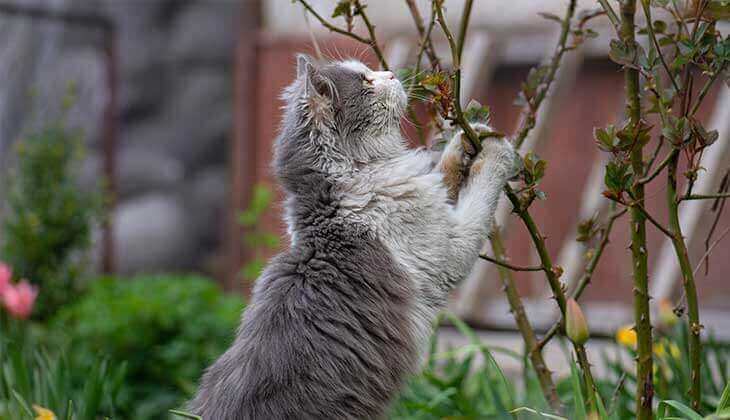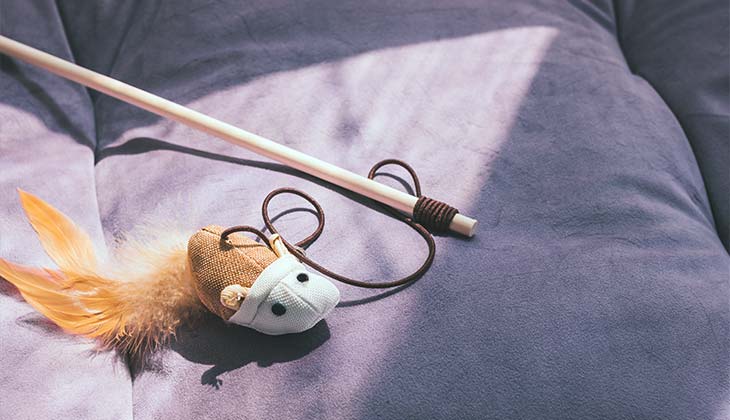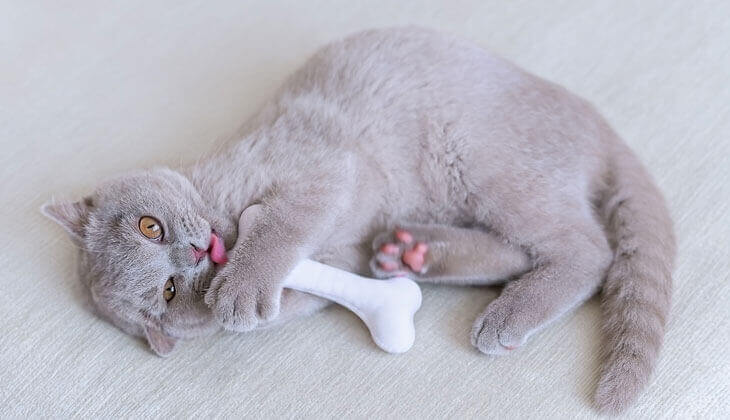Your Cat Really Does Need Exercise
HEALTH & PROTECTION
12 Aug, 2021
READ 7 minutes

Humans aren’t the only ones who need to exercise to stay healthy. It’s just as important to the overall health of our beloved cats that they get a generous dose of exercise every day. Regular movement keeps your cat’s weight down and helps him or her work off extra energy. Playtime is also crucial to your kitty’s mental well-being, helping to curb boredom, which can lead to stress-associated disease and behavioural issues. An added benefit is the additional opportunity playtime can provide for bonding with your cat.
There are plenty of ways you can keep your feline friend healthy and active – and happy too!

HOW MUCH EXERCISE DOES MY CAT NEED A DAY?
Like their big cat ancestors in the wild, cats have a strong drive to hunt and chase prey in short bursts, even if they are well-fed. Because of this, it is natural that your house cat wants to play for around 10 to 15 minutes at a time. You should plan plenty of these short sessions per day and feed your cat or offer a treat after each playtime so that he or she feels like they have “earned” their food. If your cat isn’t enjoying a particular game or play session, he or she will let you know, most likely by simply walking away.
WHY IS EXERCISE SO IMPORTANT FOR MY CAT?
Exercise has many benefits for our feline friends. It helps release pent-up energy, so your cat doesn’t claw at the curtains or the furniture. As movement helps with flexibility, it can also help ease some of the stiffness from arthritis in older cats. Regular movement also helps aid digestion.
Of course, the biggest reason to exercise your cat is to keep his or her weight in a normal range, which prevents weight-related issues like diabetes mellitus and joint disorders. Being overweight can also restrict movement, which makes it hard for your cat to groom comfortably and properly. This, in turn, leads to skin problems. Obesity in cats (and dogs too!) is becoming an epidemic, so you really do want to make exercise a priority.
HOW DO I KNOW WHAT MY CAT WILL ENJOY?
It’s true that cats can be somewhat opinionated, and no two cats are alike. There is a wide range of activities for your kitty and it will serve you well to gauge his or her interest before launching into a playtime regimen.
You can introduce some new toys to your cat and watch them while they play to find out what kinds of objects he or she likes best. Try a toy shaped like a bird, then one that looks like a mouse, and maybe another that resembles a bug. The plaything he or she enjoys the most can help you figure out what kind of toys to buy in the future.

Here are some other fun ways to play with cats and give them a good work-out at the same time:
LASER POINTERS
A laser pointer can provide endless entertainment and exercise too as your cat chases the light from the pointer. Just be careful not to shine the laser directly into the cat’s eyes, or anyone else’s. Always direct the beam at the ground or a wall.
CLIMBING TOWER/SCRATCHING POST
Cats love to climb and they especially like high places. A tower with multiple perches and/or hidey holes will give your cat space to climb, and burn some energy. There are a variety of options for these towers – some are covered in rope, carpet, fake grass, or a bit of each. It’s a good idea to place your tower near a glass door or window so that they can watch the world go by. Providing a surface meant for scratching will provide an appropriate place for your cat to display this normal behaviour.
BALLS/TOYS
Cats enjoy a variety of toys such as solid balls, plastic balls with bells in them, feathered items – basically, anything that looks like prey. They especially like toys they can bat around, such as “fishing poles.” These toys have “prey” attached to the ends, such as felt fish, mice, lizards, or even feathers. When you wave the pole around, your cat will chase the item at the end of it. You can also blow bubbles, which cats love to chase or jump up and catch.
GOING IN FOR THE KILL
Cats are especially satisfied when they can get their teeth and claws solidly into their playthings. You should let them exert this energy and be prepared to offer a replacement toy when the old ones get worn out.
PUZZLE FEEDERS
A great way to combine food with exercise is by hiding food in multiple locations or using puzzle feeders. These help your kitty use the brain, which keeps him or her mentally active. The added bonus with the puzzle feeder is the tasty reward your cat will get!

You can really get creative when playing with your cat! Here are a few other imaginative ideas for playtime:
WEAR A TAIL
Try tucking a string or long piece of cloth into the back of your pants and watch your cat chase you around the house as you walk. Just remember not to leave the string lying out if you’re not supervising as your cat can choke on it or if he or she swallows it, which can be life threatening.
GO FOR A WALK
Just like their canine friends, cats can learn to walk on a leash, although it’s best if you teach them to do this when they are young. Strolls outside are best for cats who aren’t shy and it’s recommended to use a harness instead of just a collar and a leash. Before you venture outside, check that there aren’t any neighborhood dogs running loose that might spook your kitty.
TRY A PIÑATA
Cats love to bat at things that hang overhead and adding treats will offer even more motivation. You make your own piñata using a plastic container, such as an old yogurt or sour cream container with a lid. Cut a small hole in the bottom of it and put a couple of treats inside. Hang it up with a string where your cat can reach it and when they successfully hit it, the treats will fall out.

MAKE PLAYTIME PART OF YOUR SCHEDULE
While it is obvious that the ideas for play with your cat are almost endless, it is very important that you make these sessions a regular part of your daily schedule. Carve out parts of your schedule for you and kitty to have some fun every day. Cats are most active at dawn and dusk, so trying to engage in play in the early morning or evening would be ideal. You can also work in a play session before mealtime to give them the thrill of “catching” their food. Above all, remember that your feline friend needs the exercise, and that the bonding time with you is always nice too!








